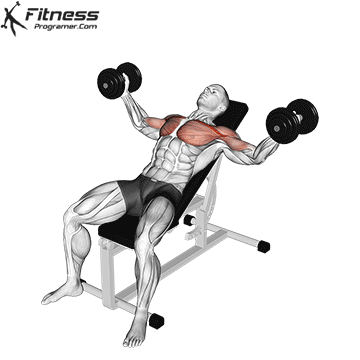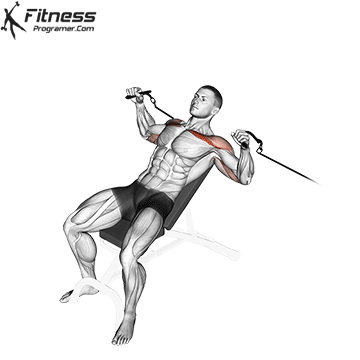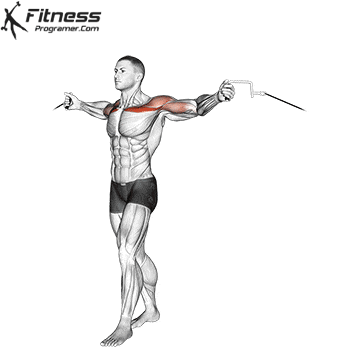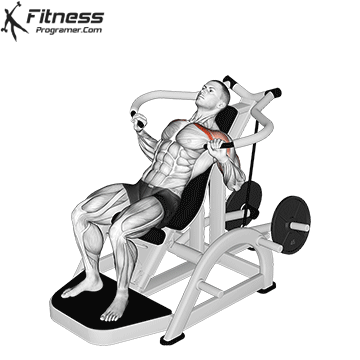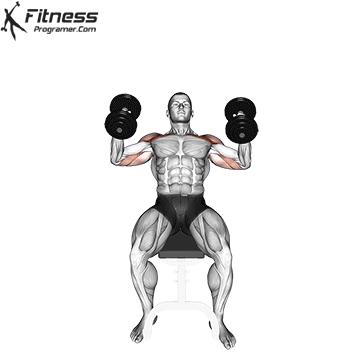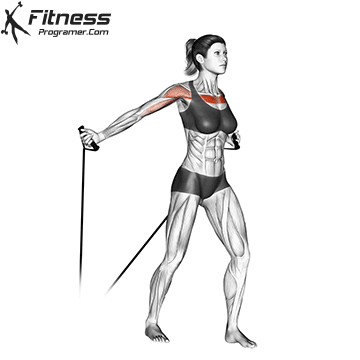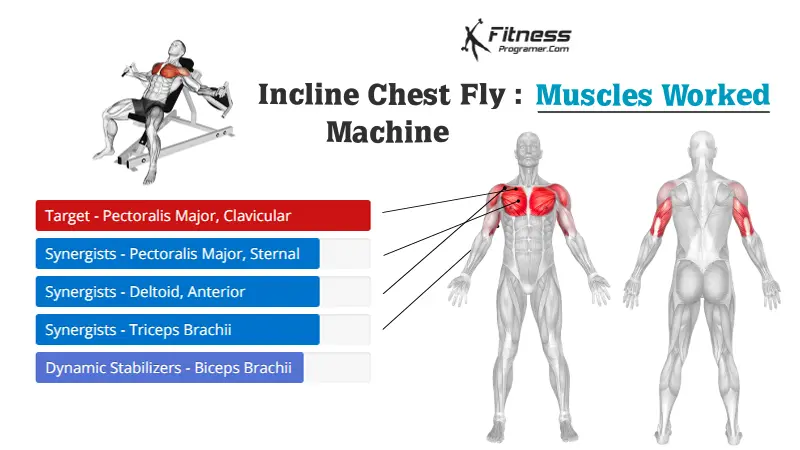Overview
The incline chest fly machine is a machine-based resistance training exercise designed to isolate the upper pectoral muscles. It typically consists of a bench or seat set at an inclined angle (usually around 30 to 45 degrees) and handles or levers connected to a weight stack or resistance system.
The incline position places more emphasis on the clavicular (upper) fibers of the pectoralis major, helping to develop and strengthen that area of the chest. It’s often used in strength training to isolate the chest muscles and promote muscle growth and definition in the upper chest region.
How to Perform Incline Chest Fly Machine
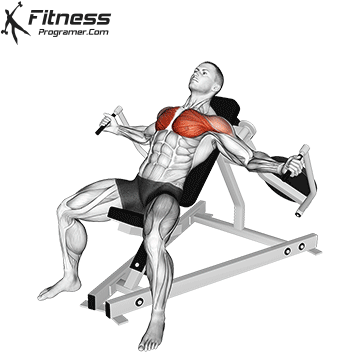
1. Adjust the Machine: Set the machine’s seat and arms to an incline that targets your upper chest. Ensure that the handles are positioned at a height comfortable for your reach.
2. Seat Positioning: Sit on the machine with your back flat against the backrest and your feet firmly planted on the floor. Grab the handles with an overhand grip, palms facing inward.
3. Initial Position: Start with your arms extended straight out to the sides, slightly bent at the elbows. Your elbows should be at a level slightly below your shoulders.
4. Movement: Keeping a slight bend in your elbows, exhale and bring the handles or levers together in front of you. Focus on using your chest muscles to perform the movement. Visualize hugging a large tree as you bring your arms together.
5. Contraction: Hold the fully contracted position for a moment, feeling the tension in your chest muscles.
6. Return: Inhale and slowly reverse the movement, bringing your arms back to the starting position in a controlled manner. Ensure a smooth and controlled motion without locking out your elbows.
7. Repeat: Aim for a specific number of repetitions and sets, considering a weight that challenges your muscles without compromising your form.
Tips for Proper Form
Keep your back flat against the bench to avoid lumbar strain.
Maintain a slight bend in your elbows throughout the movement.
Avoid excessive range of motion to protect shoulder joints.
Control the tempo, especially during the eccentric (lowering) phase.
Engage your core to stabilize your torso throughout the set.
Common Mistakes to Avoid
Locking out the elbows, which increases joint stress.
Letting the handles go too far back, risking shoulder injury.
Arching your back excessively, which reduces chest activation.
Rushing through reps without focusing on the muscle contraction.
Setting the seat too low or high, shifting focus away from the upper chest.
Benefits of the Incline Chest Fly Machine
1. Targeted Upper Chest Development: The incline angle focuses on the upper chest, specifically the clavicular fibers of the pectoralis major. This helps in sculpting and strengthening the upper chest region, providing a balanced and aesthetic chest shape.
2. Isolation of Chest Muscles: It primarily engages the chest muscles (pectorals) while minimizing the involvement of other muscle groups. This isolation can help in concentrated chest muscle development.
3. Variation in Chest Workout: It offers a different angle compared to traditional flat bench exercises, providing variety in your chest workout routine. Changing angles can prevent muscle adaptation and plateauing, leading to continued progress.
4. Enhanced Stretch and Range of Motion: The machine allows for a deeper stretch at the bottom of the movement, enhancing the range of motion for the chest muscles. This can improve flexibility and muscle engagement.
5. Controlled and Safer Movements: Using a machine can help maintain proper form and control throughout the exercise, reducing the risk of injury compared to free weights where stabilizing muscles might be at risk.
6. Suitable for Beginners: It can be a good starting point for beginners to get used to chest exercises. The machine’s guided movement helps individuals understand the proper motion and muscle engagement required for chest exercises.
How to Incorporate Into Your Routine
The incline chest fly machine can be used for hypertrophy, muscle endurance, or activation before heavier compound lifts. Here are programming suggestions:
For Beginners: 2–3 sets of 10–12 reps using a light to moderate weight to learn correct form.
For Hypertrophy: 3–4 sets of 10–15 reps with a moderate tempo, focusing on contraction.
For Strength: 3–5 sets of 6–8 reps with a heavier weight, used after compound lifts.
For Functional Training: Pair with push-up variations or resistance band work in supersets.
For Circuit Training: Include in a chest-focused circuit at 12–15 reps for time-based sets.
For General Fitness: Add 2–3 sets of 10–12 reps at the end of upper-body workouts.
Incline Chest Fly Machine: Muscles Worked
Here are the main muscles worked during the incline chest fly machine exercise:
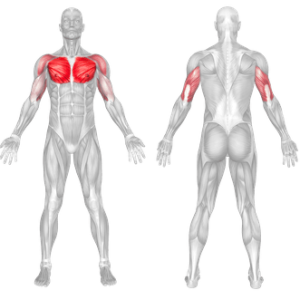
Incline Chest Fly Machine: Variations
Frequently Asked Questions
Is the incline chest fly machine better than dumbbells?
For beginners or those seeking joint safety, the machine provides more stability and allows better isolation of the upper chest.
Can I use this machine to build a bigger chest?
Yes. When used consistently with progressive overload, it can help enhance chest development, especially the upper region.
What incline angle is best?
Most machines are fixed, but if adjustable, a 30 to 45-degree incline best targets the upper chest without over-involving the shoulders.
How often should I use it?
1–2 times per week is sufficient, depending on your training split and goals.

